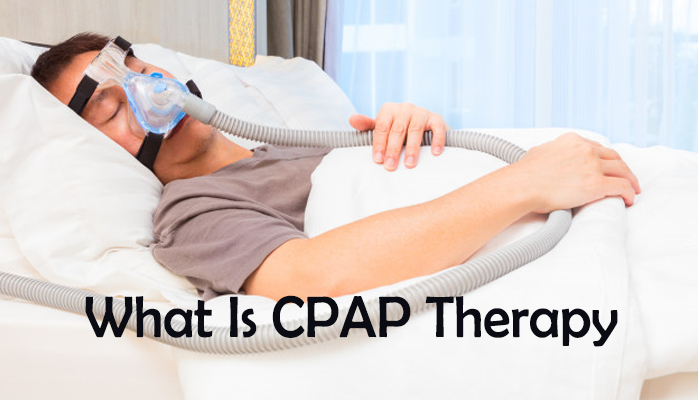What is CPAP Therapy?
CPAP therapy is a treatment path that is used to treat obstructive sleep apnea (OSA). Obstructive sleep apnea is a medical condition and sleeping disorder that causes your throat muscles to relax, your airway to become obstructed by your tongue or tonsils, and you to stop breathing. This leads to many subsequent arousals throughout the night, referred to as an apnea event.
Obstructive sleep apnea can be mild or severe:
- Mild OSA: 5-14 apneas per hour of sleep
- Moderate OSA: 15-30 apneas per hour of sleep
- Severe OSA: 30+ apneas per hour of sleep
When you stop breathing and rouse this much throughout the night (anywhere from 40 to hundreds of times throughout the night), the natural result is severe sleep deprivation. As a result, your life may be shorter, unhappier, and less performant than if you treated your sleep apnea.
This is why CPAP therapy is so important. In CPAP therapy, you use a CPAP machine to gently push air into your airway to keep it from collapsing, allowing you to continuously breathe while sleeping.
What is a CPAP Machine?
 A CPAP device/machine stands for Continuous Positive Airway Pressure. It is the backbone of CPAP therapy and is considered the gold standard for treating obstructive sleep apnea.
A CPAP device/machine stands for Continuous Positive Airway Pressure. It is the backbone of CPAP therapy and is considered the gold standard for treating obstructive sleep apnea.
A CPAP machine is a small, rectangular box with a motorized fan inside and an adjacent humidifier. Connected to the CPAP device is a flexible tube that leads to a breathing mask. The fan creates a gentle positive pressure in the mask and delivers the pressurized air to your nose and/or mouth depending on which type of mask you have. The result, no more lapses of breathing at night because the positive air pressure keeps your airway open.
As said, there is also a humidification chamber attached to CPAP machines. Technically, a humidification chamber is optional, but most people use because lack of humidification while using CPAP devices can lead to irritation in the nasal passage and throat.
How Does a CPAP Machine Work?
The primary component in CPAP machines is the small fan inside. The small fan inside delivers gentle, positive pressure through a connected hose to the breathing mask. The hose is a lightweight, flexible tube that is kept warm in order to reduce condensation. Among other things, too much condensation can lead to sanitation problems, namely, mold growth.
Because of positive pressure is always delivered to your breathing passageway, it will not collapse when your throat muscles relax. Without a CPAP machine, your airway would become blocked (e.g., by your tongue or tonsils).
The pressure can be a little strange at first, but it’s rare that people report any long-term problems associated with it.
How Effective is CPAP Therapy?
CPAP therapy has been around for over 30 years and is the standard course of OSA treatment for most people. In short, it’s the current standard with a proven track record for being an extremely effective OSA treatment. Proponents of the CPAP therapy often say things like:
- "I can’t sleep without my CPAP machine."
- "My CPAP machine changed my life."
- "I’m so much happier since I started using it."
It’s very uncommon for someone to have chronic problems getting to sleep with their CPAP machine, and most OSA problems do not require surgery. Some complaints you might hear about CPAP therapy are:
- The CPAP mask takes a few days to get used to
- The positive air pressure is strange at first
- Some variations of face masks don’t work with my face shape
- I have to switch between a couple face mask types (full-face mask, nasal mask) to avoid strap marks
- CPAP machines make it a little uncomfortable to get to sleep
By and large though, any discomfort faced with wearing a CPAP is far outweighed by the effectiveness of CPAP therapy in treating sleep apnea and the many health problems (i.e., less life, lower quality life, worse performance, heart problems) that accompany sleep apnea.
See forum where people discuss CPAP effectiveness.
If you live in Alaska and are concerned that you have OSA or have already been diagnosed, contact us and we can walk you through the steps needed to successfully begin CPAP therapy where appropriate.


